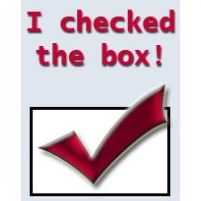A Corporate Tax Rule that Cost U.S. $10 Billion and Helped Double Revenues…Overseas
Wednesday, September 28, 2011

Fifteen years ago, the Internal Revenue Service (IRS) made a simple rule change intended to cut down on tax paperwork for U.S. companies. Since then the “check-the-box” procedure has become a windfall for corporations that have used the change to move profits from countries with high business tax rates to those nations with low or no corporate taxes.
The rule costs the U.S. Treasury about $10 billion in tax revenue, and billions of dollars more for other countries as well.
Check-the-box allows companies to shift profits from high-tax countries by marking an IRS form that transforms subsidiaries into a “disregarded entity,” or “tax nothings.”
Not only has the rule cost the U.S. government money, it’s also helped encourage foreign investment by American corporations. Over the last seven years, the earnings that U.S. companies shelve overseas have doubled to about $1.8 trillion.
The IRS created the check-the-box regulation in 1996. Within two years, the Department of the Treasury tried to undo its mistake—but corporate lobbyists fought off any change, and continue to do so to this day. When Barack Obama took over the U.S. presidency in January 2009, he made eliminating check-the-box a leading component in his plan to raise revenues. However, he quickly retreated in the face of a fierce and well-financed attack by corporate leaders.
In Europe, experts at the Organization for Economic Co-operation and Development are considering ways to circumvent tax arbitrage, in which companies exploit different tax rules among countries to reduce their tax burden.
-Noel Brinkerhoff
Corporations Couldn’t Wait to ‘Check the Box’ on Huge Tax Break (by Jeff Gerth, ProPublica, and Megan Murphy and Vanessa Houlder, Financial Times)
Momentum Builds for Global Crackdown on Tax Loopholes (by Vanessa Houlder, Financial Times)
Tax Havens: International Tax Avoidance and Evasion (by Jane C. Gravelle, Congressional Research Service) (pdf)
- Top Stories
- Unusual News
- Where is the Money Going?
- Controversies
- U.S. and the World
- Appointments and Resignations
- Latest News
- Trump Goes on Renaming Frenzy
- Trump Deports JD Vance and His Wife
- Trump Offers to Return Alaska to Russia
- Musk and Trump Fire Members of Congress
- Trump Calls for Violent Street Demonstrations Against Himself






Comments